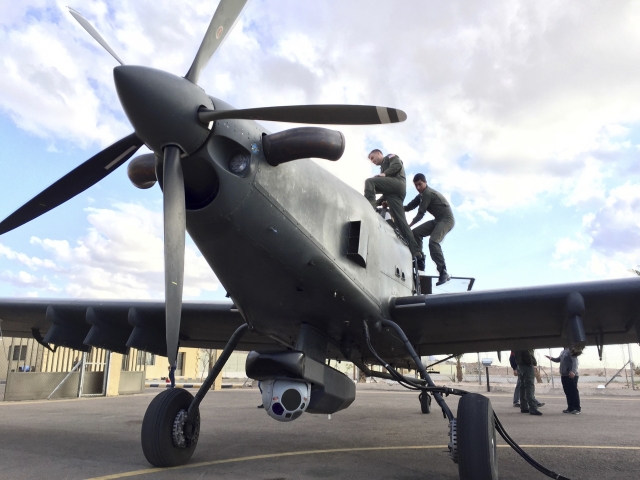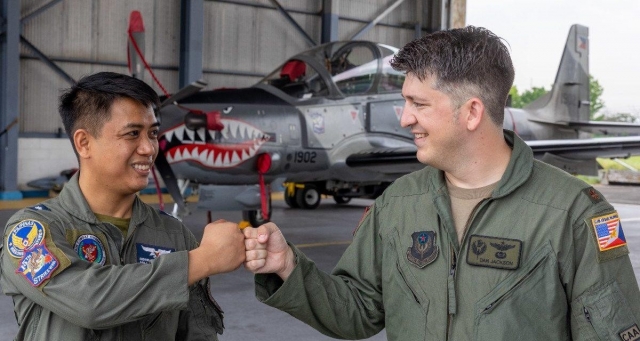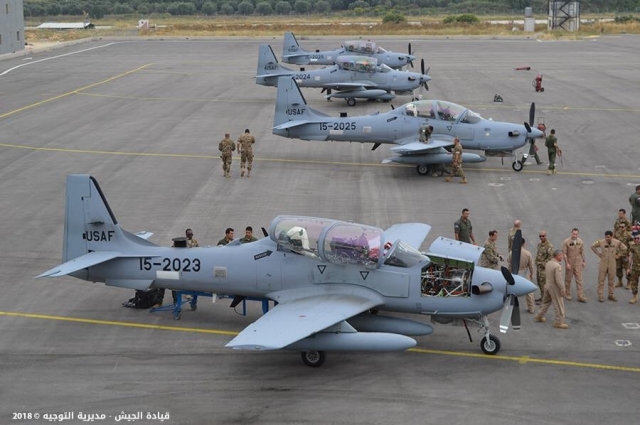 Changes in USAF's TAA and CAA missions
Changes in USAF's TAA and CAA missions
With the disappearance of the mission in Afghanistan, a large part of the USAF activities for friendly nations also seemed to diminish.
This is a seven minute read about USAF's Train, Advise and Assist (TAA) and Combat Air Advisor (CAA) tasks and missions. This, in combination with the current world politics and conflicts will likely change USAF's activities in the (near) future.
Combat Aviation Advisors are experienced USAF and other US-service personnel (Military/ Civil), who serve in operational aviation detachments and are trained to do five core functions: Train, Advise and Assist (TAA), assess and equip.
At this moment, there are basically three squadrons. The 81st Fighter Squadron based at Moody AFB (GA), the 6th Special Operations Squadron and 711th Special Operations Squadron, both collocated at Duke Field, also known as Eglin AFB Auxiliary Field #3 (FL).
Originally emerged to curb Counterinsurgency (COIN), the aforementioned USAF-units provide formal training to friendly foreign states’ militaries through practical means and hands-on support.
With the formal support, the USAF provides TAA-expertise in the use of unique and tailored airpower. This includes Close Air Support (CAS), Intelligence, Surveillance, Reconnaissance (ISR) and the ability to transport military troops and supplies in and out of combat/conflict areas by of aircraft.
All aircraft, mostly in small amounts, some already ordered and delivered to friendly foreign states Air Forces, are present in the USAF's inventory.
Sometimes leased and provided with a civil registration. From Cessna-208s to M-28 Skytrucks, AT-802 Sky Warden/ Longsword aircraft, A-29 Super Tucanos and AT-6 Wolverines, the aircraft used for TAA are often to be found in the US.
But the TAA is also carried out in and over the most remote places of the world. Recently, an agreement was finally reached to order multiple AT-802s for USSOCOM. Eventually, these will see service within United States Special Operations Command's (USSOCOM) Air Force Special Operations Command (AFSOC) units (See 4*).
While curbing COIN, mostly supported by AFSOC-units, have been going on for a while now, there are also conventional Air Combat Command (ACC) and Air Education and Training Command (AETC) USAF jet units who are tasked to fulfill the formal training missions and TAA roles.
 Besides the already mentioned 81st Fighter Squadron, which until recently only focussed on turboprop light attack aircraft, there is, for instance, the 428th Fighter Squadron, part of the 366th Fighter Wing at Mountain Home AFB (ID) This squadron currently operates Republic of Singapore Air Force (RSAF) F-15SG Strike Eagle aircraft.
Besides the already mentioned 81st Fighter Squadron, which until recently only focussed on turboprop light attack aircraft, there is, for instance, the 428th Fighter Squadron, part of the 366th Fighter Wing at Mountain Home AFB (ID) This squadron currently operates Republic of Singapore Air Force (RSAF) F-15SG Strike Eagle aircraft.
Arizona Air National Guard's 162nd Fighter Wing, based at Tucson (AZ), is reputed because of its nature to host foreign friendly F-16s. In the recent past Iraq F-16 pilots with own new aircraft were trained at Tucson. With the last Royal Netherlands Air Force F-16 students having been educated and trained (See 5*), this will certainly pave the way for other foreign units to arrive at Tucson.
The US based Republic of Singapore Air Force's (RSAF) 21st Fighter Squadron is one of the biggest contenders. The RSAF have to vacate their F-16s from Luke AFB (AZ) in order to make room for more (foreign) F-35As assigned to the 56th Fighter Wing.
There is more to it. USAF CAA experiences, with, and in Iraq, Afghanistan, the Philippines, Colombia, Nigeria, Lebanon and other countries show, that, over the past four decades, (political) commitment, cultural awareness skills, creativity, adaptability and patience are the key attributes that are needed for any achievement(s) in shady and inconclusive Airpower environments.
Key words are formal/ non formal and commitment in a changing world. This also includes to confront countries such as China and Russia. A lot has to do with the various lobbyists within the US Department of State and the US Department of Defense.
 Will the USAF end TAA and CAA missions? The answer is no. For the time being there will be committed formal USAF-support missions to different countries in the world. Besides that, there will be non formal support as well.
Will the USAF end TAA and CAA missions? The answer is no. For the time being there will be committed formal USAF-support missions to different countries in the world. Besides that, there will be non formal support as well.
Scramble assesses that the USAF will need more time to think and revise their TAA and CAA mission strategy. At this time it is not known to Scramble whether any USAF squadrons will be disbanded.
Recent reporting by Time Magazine, revealed that Ukraine is now in the phase of being educated and trained on US territory to be able to fly the A-10 Thunderbolt II. Not surprising in itself. A lot of US money and equipment has already been supplied to the Ukraine.
With the proposing of divesting of several USAF A-10s in the coming period, the question is not if, but when the A-10s will arrive in the Ukraine. Will a regular squadron pick up the work. Perhaps. The 81st Fighter Squadron, which at one time operated the A-10 itself, could be tasked with that mission.
To be continued...
Credit photos: USAF

